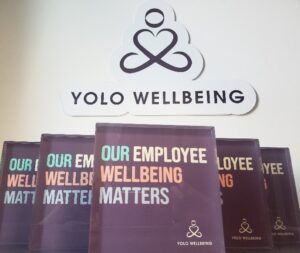How to Measure Wellbeing ROI
How do you know if your health and wellbeing delivery is generating ROI (return on investment) if you can’t measure it? There is wider recognition for workplace health and wellbeing…
In the last few years, health and wellbeing has become one of the key conversations for employers looking to meet the needs of a productive and satisfied workforce.
With increasing bodies of research available, the case for investment in employee health and wellbeing has never been more powerful.
A recent study commissioned by Xero identified a return of £5 for every £1 spent, over the period of a year; and in some cases as high as 12 times the value invested.
This would suggest that investing in staff wellbeing is not just a nice to have but a contributor to greater productivity and earnings.
So much so the European Union has committed to focusing on social protection, gender equality, health, and education, to drive economic growth into the 2030s, stating that ‘People’s wellbeing and economic growth are interdependent and mutually reinforcing.’ Council of the European Union.

The key financial benefits of the wellbeing economy include:
A person who feels appreciated will always do more than is expected.
There is a strong link between employee engagement and wellbeing. When employees are happy, they feel more energised and less stressed which lowers presenteeism and increases productivity.
From employee feedback, 96% of employees claimed their performance in work improved following their YOLO Experience2.
Evidence suggests healthy workers work almost three times as effective as unhealthy workers3, which leads to the second financial benefit…
According to Gallup, 75% of medical costs are mostly a result of preventable conditions. Consequently, better physical, mental, and nutritional health will lead to fewer sick days, presenteeism, and accidents caused by fatigue.
The value of reduced absence from preventable conditions comes from a cultural shift towards better self care.
Educating and engaging employees in the benefits of self-care, through regular and consistent activities and communications that encourage employees to be more aware and invested in their health and wellbeing.
The YOLO Experience supports clients by delivering regular intervention to improve and increases awareness of workplace health hazards including posture, stress, and mental health.
As we emerged from the pandemic and business began to recover the job market began to experience an unprecedented evolution in the ‘great resignation’.
Employees experienced significantly different ways of working and are evaluating what work means to them, placing a greater priority on their health and wellbeing.
This has become one of the key conversations for employers, who are looking for staff benefits that will attract, engage, and retain talent.
Lower attrition means fewer funds spent to recruit and train new members of staff, without overlooking the productivity gains of new staff members getting up to speed.
If you would like to understand how our services can support, you and your business please contact us 01772 283139 or email hello@yolowellbeing.co.uk
20
Feb
How do you know if your health and wellbeing delivery is generating ROI (return on investment) if you can’t measure it? There is wider recognition for workplace health and wellbeing…
15
Dec
In a report published by Cigna in November 2018, more than 68million GP appointments and 3million emergency department visits were caused by stress-related illnesses. And in 2022, 88% of the…
16
Oct
The cost of stress in the workplace reportedly costs the UK economy a massive £56 billion a year, but what does that mean to your business? In real terms the value…